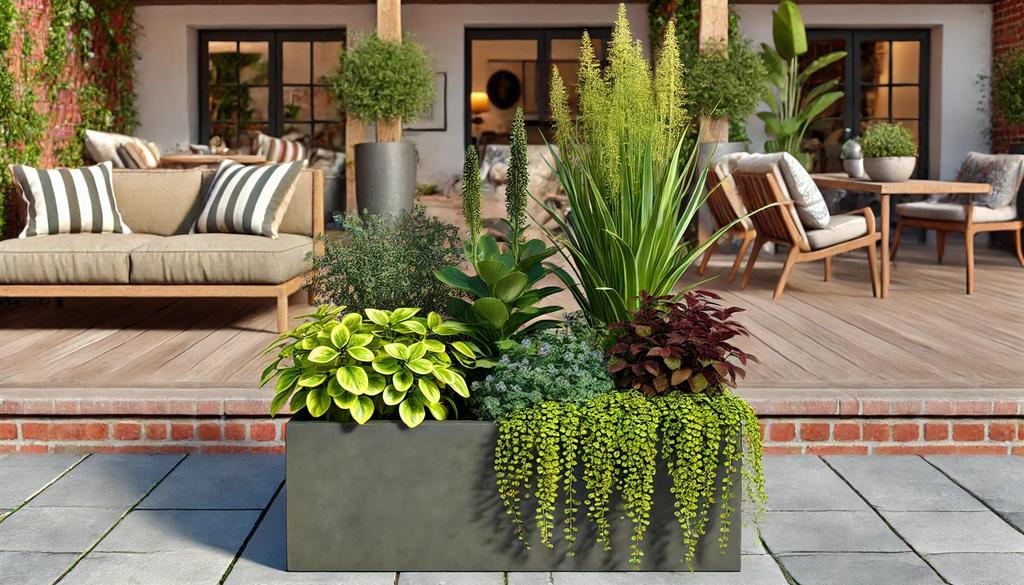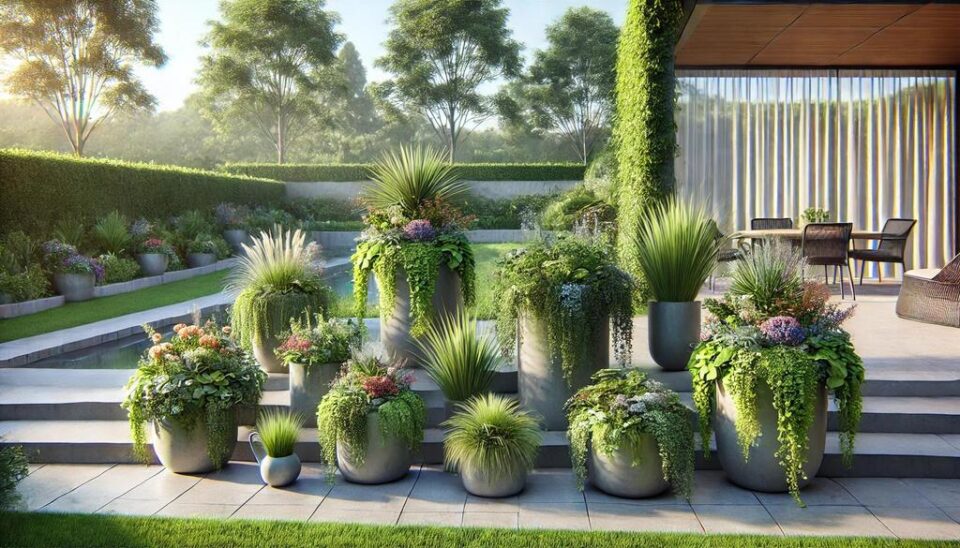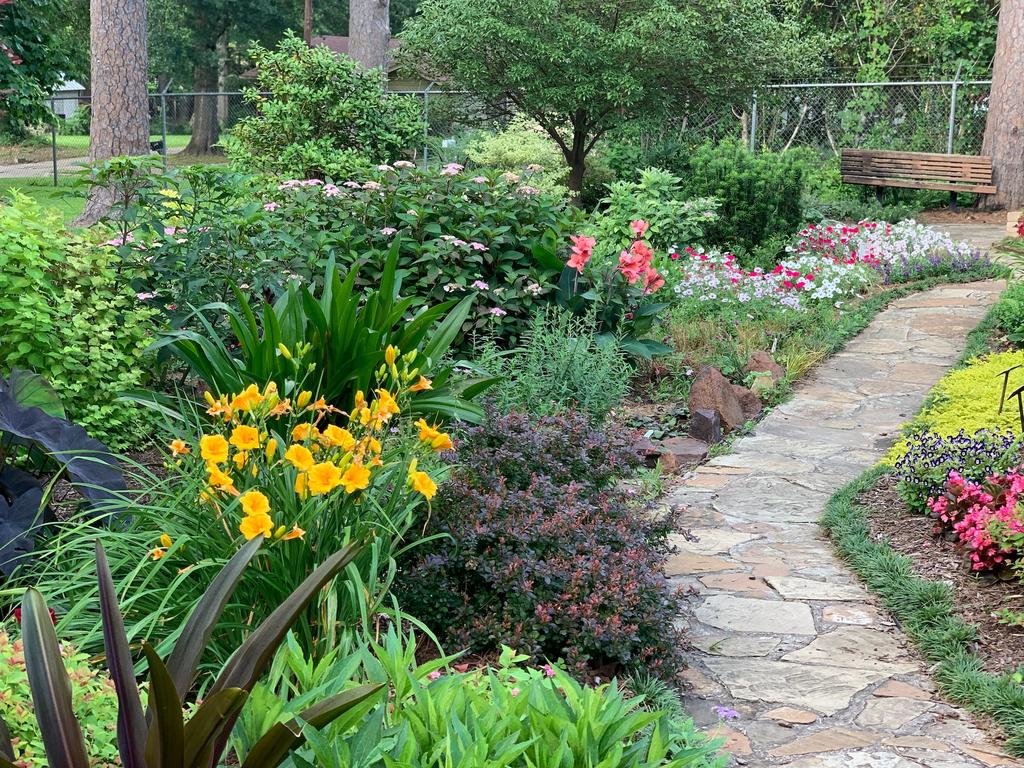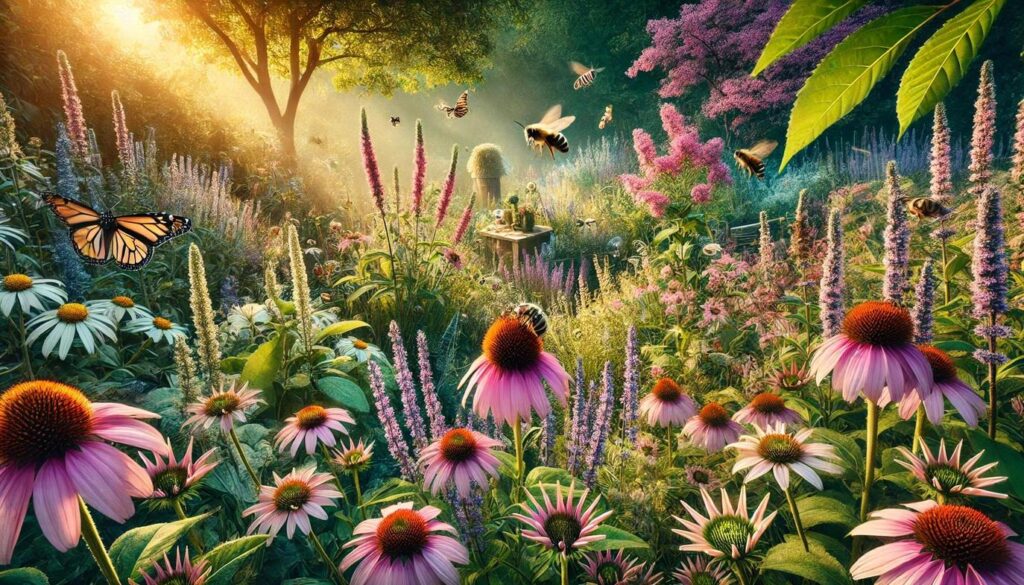Whether you live in an apartment or a spacious home, you’d benefit from having more plants around you. For one, plants add more life and color to your living space. But if you’re new to gardening, try planting using outdoor planters first.
Not convinced? What if you learned that patio pots or container gardens account for 21% of the most popular types of gardens? There’s so much you can do with planters, which may be the reason why novice and veteran gardeners choose them.
As a beginner, though, your first lesson is plant arrangement, so you’re lucky to have stumbled upon this article! Here, you’ll learn the top tips for arranging plants in any outdoor planter.
Understanding Your Space
The first step to arranging plants is understanding your space. Look around your patio or balcony. What does it get? Sun? Shade? Wind? How big is it? What does it look like now? These details matter; they’ll help you choose the right plants and planters.
Next, think about the vibe you want. Do you dream of a tropical escape? A modern minimalist space? Or maybe a cozy cottage garden? Your style will guide your plant and planter choices.
Choosing the Right Planters
Picking the perfect planter for your plants is like finding the ideal home for them. It’s more than just a container; it’s a statement piece that can make or break your outdoor space.
Material Matters
Planter material comes first. Ceramic planters, for example, are undeniably stylish but can be quite delicate. On the other hand, terracotta is classic and earthy, but it tends to dry out quickly.
Concrete planters are super sturdy but can be a bit heavy to move around. Wooden planters are also an option; they bring a natural warmth but require more care. And then there’s metal, which is modern and sleek but can heat up under the sun.
Opting for more cost-efficient options? Consider PVC planters! They’re rot-free, making them less susceptible to damage. These planters can also hold up during the winter without cracking from the frost. You can plant something in them all year round!
Size and Shape
Your planter’s dimensions and form significantly influence your arrangement’s overall effect. Selecting the right size and shape can enhance the beauty of your outdoor space, making it more inviting and aesthetically pleasing.
Do you have a small balcony or a spacious patio? Are you looking to create a tall, dramatic display or a low, sprawling one? Look for ones that fit your garden space best. Plant size should also be a factor. You don’t want a tiny plant drowning in a giant planter, right?
Color and Texture
Don’t forget about color and texture. A brightly colored planter can be a real eye-catcher, while a neutral one lets your plants shine. Think about the overall look you’re going for. Do you want your planters to blend in with your surroundings, or do you want them to pop? Texture can add interest, too. A rough, textured planter can contrast beautifully with smooth, glossy plants.

Selecting the Perfect Plants
Once you’ve decided on your type of planter, it’s time for the fun part: choosing your plants! It’s bound to be an overwhelming step, but you’ll soon be arranging plants with these tips:
Consider Plant Needs
To begin, consider your space. How much sunlight does it get? Is it a sheltered spot, or is it exposed to the wind? These factors will help you narrow down your plant choices.
Plants are living things; like all living things, they have specific needs. Each plant also has varying requirements for growth and thriving. For instance, succulents need less watering and adequate light compared to creeping myrtles that prefer more shade.
Variety is Key
Variety is the spice of life, and it’s true for planters, too. So, mix it up with different types of house plants. For example, flowering plants add pops of color, while foliage plants provide texture and interest. You can also throw in some trailing plants, which spill over the edges for a cascading effect, and taller plants to create a focal point.
Why not start with a few different plants? Around 24.7% of survey respondents reported having only two to five houseplants. So, choose a variety you can handle instead of starting with too many plants.
Color Coordination
Coordinating plant colors can elevate your planter game. For instance, complementary colors like red and green or orange and blue can create a bold statement. But if you prefer a more harmonious look, try analogous colors, which are colors that are next to each other on the color wheel.
And don’t forget about monochromatic schemes. Using different shades of the same color can create a sophisticated and elegant planter.

Creating Balanced Arrangements
Plants come in all shapes and sizes, so it’s up to you to make them work in your outdoor planters. No need to stress, though. Here are some handy tips for arranging plants:
The Rule of Thirds
Arranging your plants is like creating a mini garden within your planter. You want everything to look harmonious and pleasing to the eye.
Ever heard of the rule of thirds? Studies show that the rule of thirds guides viewers to a subject’s focal point, making that focal point stand out more.
Imagine dividing your planter into nine equal parts with two horizontal and two vertical lines. Placing your standout plants along these imaginary lines creates some visual interest.
Varying Heights
Varying the heights of your plants also adds dimension and interest. So, visualize a layered effect. Incorporate tall plants as the main focal points of your arrangement. Use medium-sized plants to fill in the central areas, adding volume and interest. Finally, introduce low-growing or trailing plants to soften the edges. This combination brings depth and balance to your planter design.
Texture and Form
Texture and form are equally important; consider mixing it up with different leaf shapes and textures to create visual weight. For example, combine large, bold leaves with delicate ferns. Or pair smooth, shiny leaves with rough, textured ones for a unique plant placement.

Maintaining Your Planter and Plants
Keeping your planter and plants thriving requires a little TLC. Regular watering is key, but you don’t want to overwater. Check the moisture level of the soil by inserting your finger into it. If it feels dry, then it’s time to water your plants. Additionally, remember to provide nourishment. Use a balanced fertilizer made for container plants, and be sure to follow the instructions on the package to achieve optimal results.
Pruning and deadheading can also keep your plants looking their best and are ideal for updating your garden. So, snip off those spent flowers and yellowing leaves to promote growth.
Finally, monitor your plants regularly for any signs of pests or diseases. Early detection is crucial for effective management and can help maintain the health of your garden. Regular inspections can help detect problems early. If you spot pests, you’ve got options from organic to chemical solutions.
Hiring A Professional To Create Stunning Outdoor Spaces With Planter Arrangements
Creating beautiful outdoor spaces with planters begins with arranging plants properly. One surefire way to guarantee the job is done properly is to engage the service of a reliable landscaper like Albuquerque Landscapes. Otherwise, simply play around with various colors, textures, layouts, and heights to find your signature style. With the tips above, you can create a stunning arrangement and transform your planter into a vibrant and thriving mini-garden!




